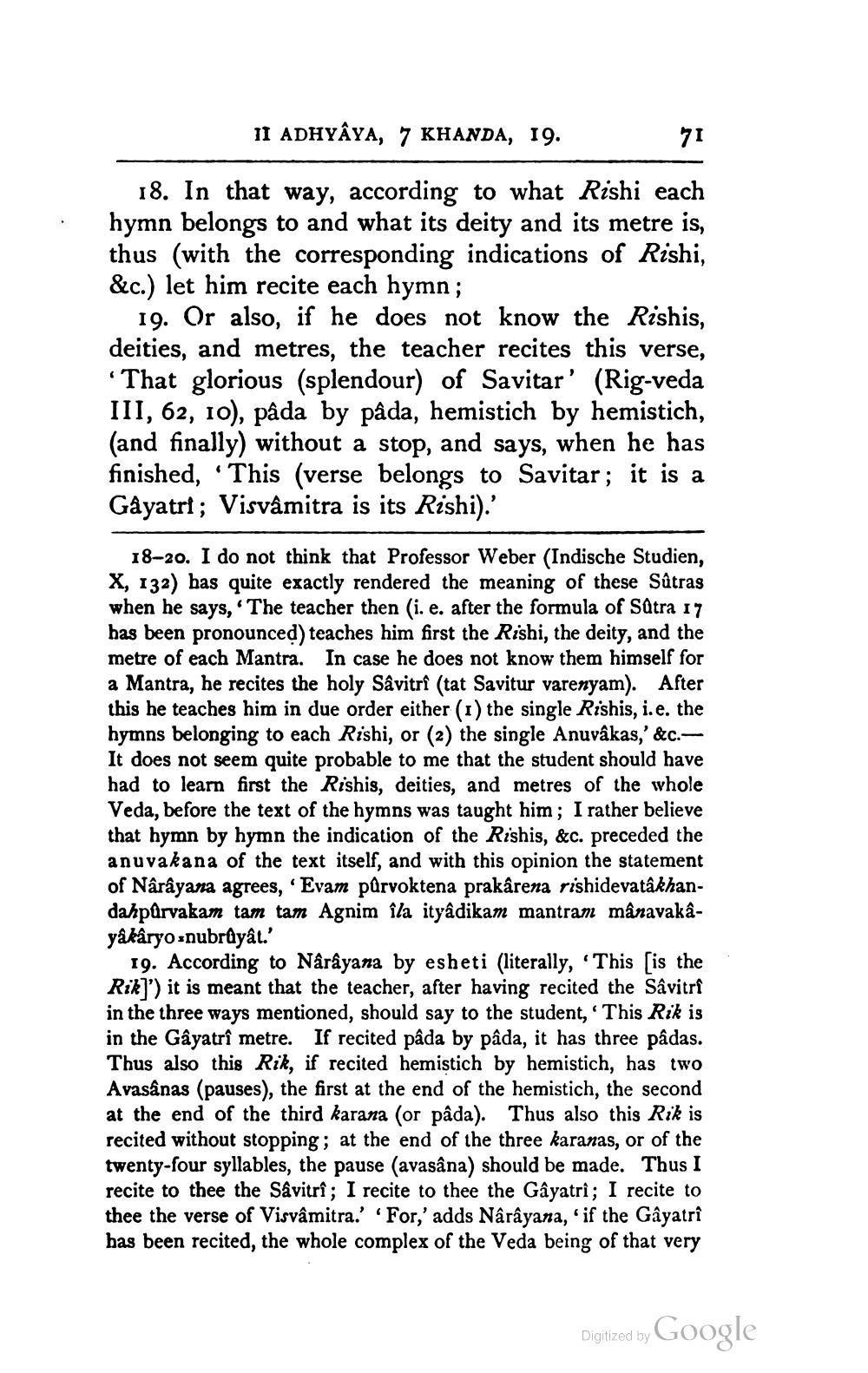________________
II ADHYAYA, 7 KHANDA, 19.
71
18. In that way, according to what Rishi each hymn belongs to and what its deity and its metre is, thus (with the corresponding indications of Rishi, &c.) let him recite each hymn;
19. Or also, if he does not know the Rishis, deities, and metres, the teacher recites this verse, 'That glorious (splendour) of Savitar' (Rig-veda III, 62, 10), pâda by pâda, hemistich by hemistich, (and finally) without a stop, and says, when he has finished, “This (verse belongs to Savitar; it is a Gayatrt; Visvâmitra is its Rishi).'
18-20. I do not think that Professor Weber (Indische Studien, X, 132) has quite exactly rendered the meaning of these Sûtras when he says, 'The teacher then (i.e. after the formula of Sūtra 17 has been pronounced) teaches him first the Rishi, the deity, and the metre of each Mantra. In case he does not know them himself for a Mantra, he recites the holy Savitri (tat Savitur varenyam). After this he teaches him in due order either (1) the single Rishis, i.e. the hymns belonging to each Rishi, or (2) the single Anuvâkas,' &c.It does not seem quite probable to me that the student should have had to learn first the Rishis, deities, and metres of the whole Veda, before the text of the hymns was taught him; I rather believe that hymn by hymn the indication of the Rishis, &c. preceded the anuvakana of the text itself, and with this opinion the statement of Nârâyana agrees, 'Evam pūrvoktena prakârena rishidevatâkhandahpärvakam tam tam Agnim ila ityâdikam mantram mânavakayåkáryo snubrûyât.'
19. According to Narayana by esheti (literally, 'This [is the Rik]') it is meant that the teacher, after having recited the Savitri in the three ways mentioned, should say to the student, 'This Rik is in the Gayatrî metre. If recited pâda by pâda, it has three pâdas. Thus also this Rik, if recited hemistich by hemistich, has two Avasanas (pauses), the first at the end of the hemistich, the second at the end of the third karana (or pâda). Thus also this Rik is recited without stopping; at the end of the three karanas, or of the twenty-four syllables, the pause (avasana) should be made. Thus I recite to thee the Savitri ; I recite to thee the Gayatri; I recite to thee the verse of Visvâmitra.' 'For,' adds Nârâyana, if the Gâyatrî has been recited, the whole complex of the Veda being of that very
Digitized by Google




